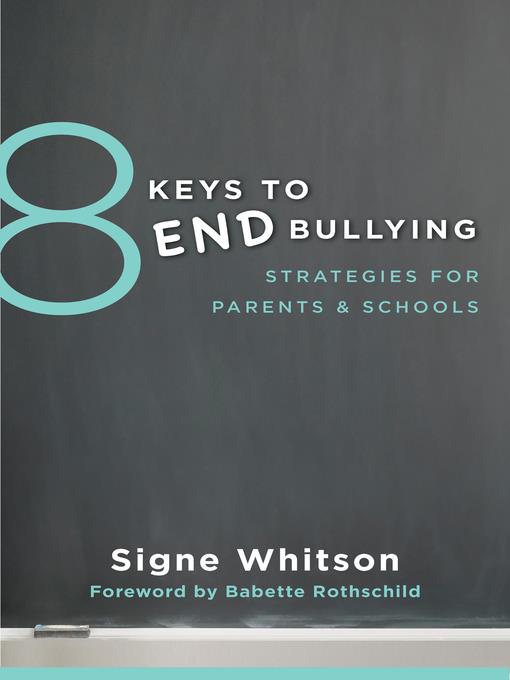
8 Keys to End Bullying
Strategies for Parents & Schools (8 Keys to Mental Health)
- اطلاعات
- نقد و بررسی
- دیدگاه کاربران
نقد و بررسی

April 21, 2014
Whitson (Friendship and Other Weapons) gives parents and educators an excellent set of tools to help young people deal with bullying, with “specific, clear, helpful guidelines… on how to intervene in effective ways.” Whitson begins by defining bullying as “intentionally aggressive behavior, repeated over time, that involves an imbalance of power,” carefully distinguishing it from behavior that is simply rude or mean. She distinguishes between varieties of bullying, from physical and verbal violence, relational abuse (like spreading rumors) and withdrawal of friendship to cyberbullying. While warning that there is no easy solution, she suggests “small, powerful acts” in an ongoing campaign to prevent bullying. Whitson goes beyond the expected with the rest of the seven keys, providing exercises, questions to consider, and practical strategies to help victims, bystanders, and even bullies. She devotes a chapter to changing the entire culture of a school via “social and emotional learning” because parents and teachers must be ready to provide powerful support. A necessary read for parents and teachers.

April 15, 2014
How to identify and terminate aggressive mistreatment of and by children. Bullying has been around for decades, but with the advent of the Internet, cellphones and other electronic devices, children are being subjected to this form of intimidation far beyond the reaches of the playground. A social worker and educator specializing in youth issues, Whitson (Friendship and Other Weapons, 2011, etc.) outlines an eight-step practical approach to prevention for parents, community leaders and teachers. The first key is to distinguish between a harmless prank and actual bullying; the author explains how to identify aggressive behavior, why students engage in these acts and which kids are likely to be victims. By establishing a connection or bond with a child, adults will have a better chance of discovering acts of bullying and stopping them. Whitson includes actual scenarios with possible responses, so adults are not at a loss for words when confronting a bully. (Brief messages are best, she notes.) Teaching children how to be safe online is another important idea in this age of cyberbullying, which can affect even the youngest of children. The author emphasizes the need to teach netiquette and to know a child's passwords; she also covers safety strategies children can learn to protect themselves when online without adult supervision. Through communication with would-be bullies and their potential victims, much of this maltreatment can be avoided. "Maintaining an open dialogue about bullying and making sure that we continue to shine a bright light on this once-shadowed topic," writes the author, "is the only way that we will be able to hold adults and kids accountable for bringing an end to this long-standing problem." The conversation is far from over, but Whitson blasts a hole in the darkness, providing useful information on how this form of persecution can be halted.
COPYRIGHT(2014) Kirkus Reviews, ALL RIGHTS RESERVED.

May 15, 2014
Norton's "8 Keys" series focuses on mental health issues such as recovering from trauma, brain-body balance, and stress management. This title covers the prevalent and often tragic issue of bullying, both in schools and in online environments. The author illustrates eight core strategies that adults and teachers can use to address this aggressive behavior, beginning with an important chapter on differentiating bullying from other common behaviors, such as rudeness (unintended) and meanness (usually an isolated incident). Whitson addresses the psychology behind why kids bully and outlines signs for parents and educators to heed for recognizing bullying. Emphasizing that strong connections with adults are key factors in both preventing and addressing bullying, the author then moves on to specificities, such as building emotional competence, turning bystanders into buddies, and reaching out to kids who bully. VERDICT Complete with example scenarios, exercises for readers, and sample responses, the author does a convincing job of helping adults feel empowered to address this important issue.
Copyright 2014 Library Journal, LLC Used with permission.




دیدگاه کاربران